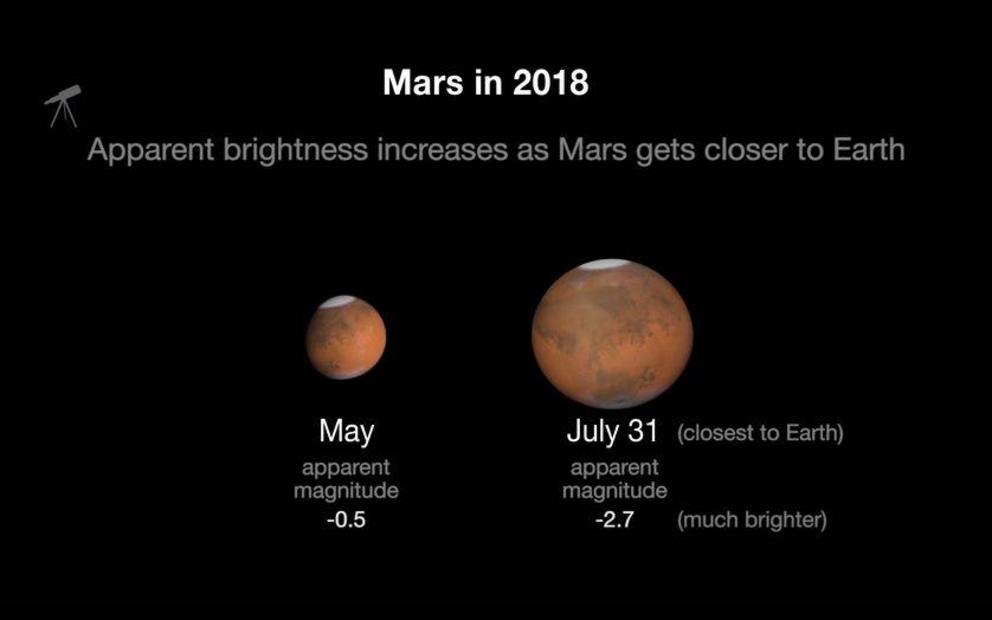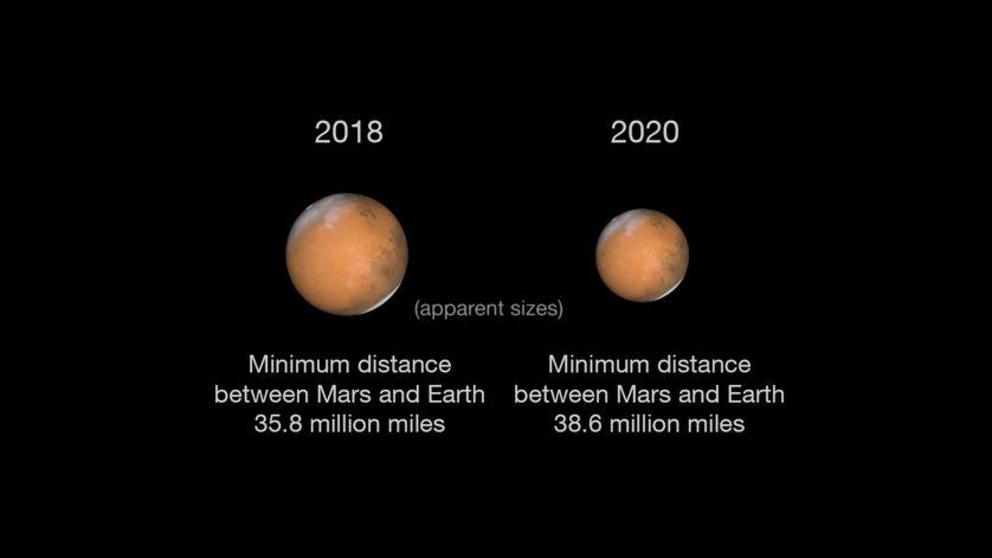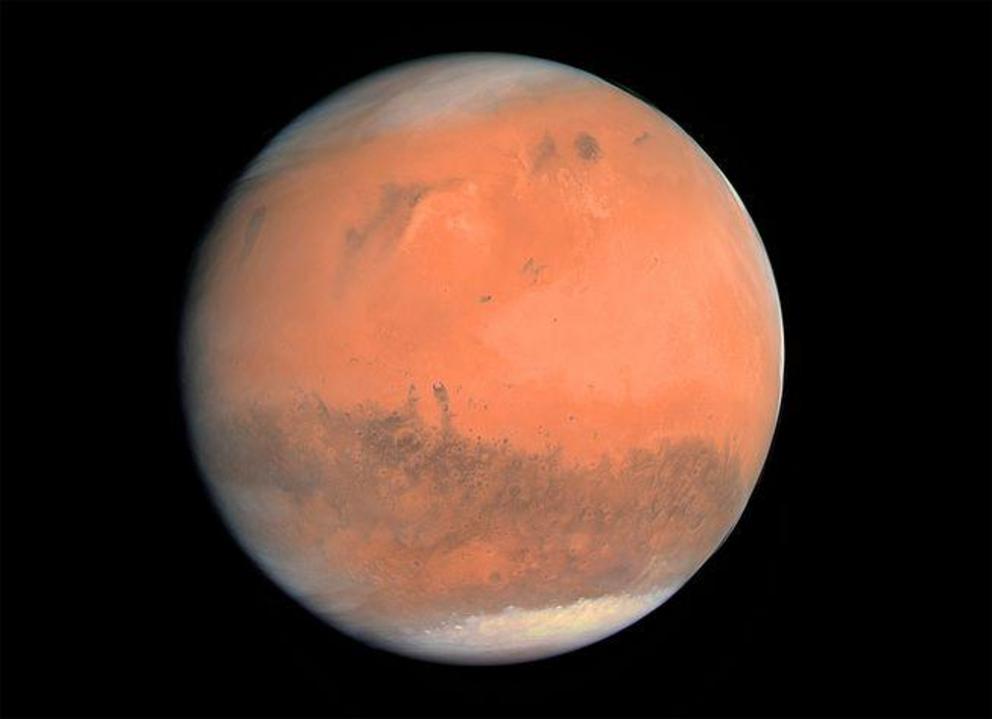Mars is about to shine brighter than any time since 2003
Don't miss the spectacle as the red planet swings close to Earth in July.
On July 28, 2018, Earth and Mars will come within 35.8 million miles of each other.
The ruddy, dust-swept world of Mars is rapidly converging on our own.
Over the next several weeks, the orbits of Mars and Earth will grow ever-closer, culminating in a view of the red planet in the evening sky not seen in either brilliance or size since 2003. Back then, the distance between Earth and Mars was only 34.6 million miles, the closest the two planets had come to each other in more than 60,000 years. This summer's flyby, peaking on the morning of July 31, will offer a worthy encore, with backyard telescopes eyeing the red planet's distinctive features from a distance of only 35.8 million miles.
"This Martian pass in July will be almost as good as the ultra-close opposition on 2003," Dean Regas, astronomer for the Cincinnati Observatory, told MNN. "Mars will easily be visible to the naked eye. In fact, you will be hard pressed to miss it. It will look like a glowing orange beacon of light rising in the southeast after sunset. It'll be much brighter than any star, brighter than Jupiter, nearly as bright as Venus. And you'll see it every night for the next several months."
 Mars will more than double in size in the night sky between May 2018 and late July 2018.
Mars will more than double in size in the night sky between May 2018 and late July 2018.
The phenomenon of red planet growing and shrinking in our night sky is due to the orbital differences between Earth and Mars. While it takes us only 365.25 days to complete a turn around the sun, the orbit of Mars is much further away and requires 687 days. As such, Earth's speed on the celestial racetrack allows it to overtake Mars roughly every 26 months.
Some encounters, however, are closer than others. This is because the orbit of Mars, like Earth, is elliptical, with the sun being nearer one end of the ellipse. This summer, when Mars and Earth converge on July 27, the red planet will be at its closest approach to the sun, resulting in what's known as a "perihelic opposition." The opposition that took place in 2016 by comparison, when Mars was further away from the sun, brought it to within only 47 million miles of Earth.
As for spotting Mars, the weeks before and after opposition will make it easy as the planet rises in the east after sunset and sets in the west just before dawn. Throughout late August, Mars will shine at an average brightness of around -2.78, second only to Venus. You should have no difficulty on clear evenings picking out its distinctive red hue from the rest of the planets.
The next opposition arrives in 2020, when Mars will come within 38.6 million miles of Earth. That said, as shown in the graphic below, a difference of only a few million miles certainly makes 2018 the more favorable experience.
 While 2020 will bring Mars almost as close as 2018, the size difference is dramatic.
While 2020 will bring Mars almost as close as 2018, the size difference is dramatic.
According to Regas, who recently released a Southern Hemisphere edition of his celebrated field guide "100 Things to See in the Night Sky," Mars continues to be among the most popular celestial objects for stargazing.
"Every 26 months when Mars comes closer to Earth we celebrate at the Cincinnati Observatory with a public viewing event called, "Marsapalooza!" he told us. "We will open up July 27 and 28 from 9-11 p.m., and if it is clear, we will point our two historic telescopes at Mars. Our views are very similar to what Percival Lowell saw over 100 years ago when he swore he could see "canals" on the planet. They aren't really canals, but the view is pretty sweet and you can dream of Martians!"
The next time Mars comes as close as this summer won't happen again until Sept. 15, 2035 –– an extremely close opposition that could herald the beginning of a new age in human exploration. In fact, with the Curiosity rover recently detecting the presence of organic molecules, it's possible the momentum to place humans on the red planet will ramp up over the next decade.
"Maybe, just maybe we will have sent a manned mission to Mars just before that opposition," remarked Regas. "Is it possible that we could be watching and waiting for the first humans to land on the Red Planet? And on what devices would we watch these astronauts on their incredible journey? No TV, phone, or watch needed. By 2035 maybe we will watch and hear anything we want right in our heads. I call it the iBall," he added half-jokingly.

